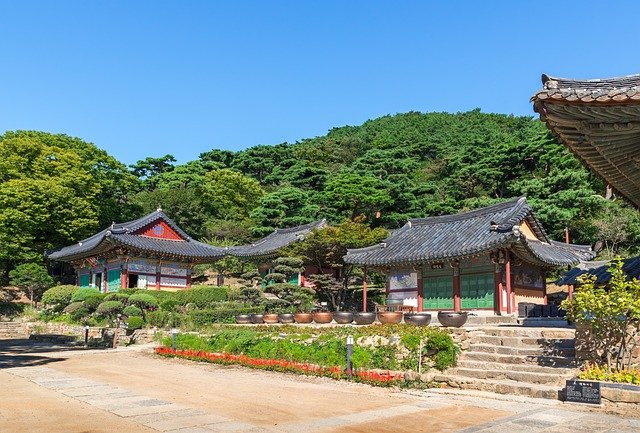Best Things To Do In Incheon
Incheon, a city renowned for its natural splendor, is a veritable treasure trove of picturesque islands, pristine beaches, eco parks, and luxurious resorts. Beyond these natural attractions, Incheon also boasts a diverse array of tourist destinations. Having lived in Incheon personally, I can attest to the fact that the cost of living, including room rents and daily expenses, is notably reasonable. Exploring Incheon’s Islands: Incheon is home to several distinguished islands, each offering its own unique allure: Daebudo Island: Nestled on the west coast near the capital, Daebudo Island presents breathtaking panoramic vistas, particularly from the Moon Observatory. Visitors can enjoy invigorating bike rides through its lush reed fields and serene forests. The sunset views at Bangameori and Seowimaebonggil Beaches are not to be missed, and sampling local delicacies such as kalguksu and grilled seafood at well-known matjip restaurants enhances the overall experience. Muuido Island: Accessible by car via the Muui Bridge, Muuido Island is an excellent choice for a quick escape. The island features enchanting hiking trails with sweeping views from Guksabong Peak and Mt. Horyonggoksan, celebrated for their natural beauty and the striking night skies illuminated by the nearby Incheon Airport. The island’s name is thought to derive from its shape, which is reminiscent of a general in armor or a dancing figure. Wolmido Island: Having frequented Wolmido Island numerous times, I can vouch for its enduring appeal. As a historic seaside resort, Wolmido Island continues to captivate visitors with its amusement park, scenic bike paths, and vibrant cultural offerings. Thrilling rides, charming seaside cafés, and cherry blossoms in spring contribute to its popularity. Additionally, the Museum of Korea Emigration History provides fascinating exhibits throughout the year. A unique attraction is the sheep experience, where visitors can explore the sea and enjoy concerts held on the water. Other noteworthy islands include:Seongmodo,Yeongjongdo,Sindo,Silmido,Yeongheungdo etc. Relaxing at Incheon’s Beaches: Incheon’s coastline is graced with several stunning beaches: Eurwangni Beach: Known for its awe-inspiring combination of sea and mountain views, Eurwangni Beach provided a memorable experience during my visit in March last year. As the closest and most popular beach to Seoul, it offers a vibrant atmosphere, abundant marine activities, dining options, and accommodations. Its convenient accessibility from Incheon Airport and year-round appeal make it a top destination for both locals and tourists. Kongdol Beach on Baengnyeongdo Island: Recognized as a Natural Monument, Kongdol Beach is famed for its distinctive round pebbles and untouched natural beauty. Visitors can relish the tranquil sounds of the waves and, on rare occasions, witness the Milky Way in the night sky. Preservation is key here, as visitors are encouraged not to remove any pebbles from this pristine location. Simnipo Beach on Yeongheungdo Island: Featuring a sandy shoreline, a coastal trail, and uniquely shaped trees, Simnipo Beach is popular for daytime activities such as conch and clam gathering. The beach offers a spectacular view of the Incheon skyline at night and is ideal for camping and group gatherings, making it a perfect venue for creating lasting memories with family or friends. Incheon Chinatown: Incheon Chinatown, while compact, provides an enjoyable experience for tourists. My visit this year revealed a vibrant area where one can immerse in Chinese culture and sample various food stalls. Established in 1883, this area showcases intriguing architecture and is particularly delightful to explore in the evening. Incheon Grand Park : Situated in Jangsu-dong amidst the Gwanmosan and Sangasan mountains, Incheon Grand Park is a family-friendly destination featuring serene lakes, lush botanical gardens, a children’s zoo, and seasonal attractions like cherry blossoms and autumn foliage. The park’s expansive grounds make it ideal for leisurely holidays and bike rides, and advance planning is recommended to fully enjoy its offerings. Know more : https://thekoreasphere.com/incheon-grand-park-south-korea/ Jayu Park : As Korea’s first Western-style park, Jayu Park offers a scenic promenade with sweeping city views, historical landmarks such as the General MacArthur statue, and attractions including a small zoo and a cherry blossom festival in April. Its elevated position and stunning nightscape make it a favored spot for visitors and couples alike. songdo Central Park: Located in Songdo International City, Songdo Central Park combines stroll gardens, artistic sculptures, and a 1.8-km waterway perfect for canoeing and kayaking. Visitors can marvel at the breathtaking night views from the sunset café observatory or the Free Observation Deck on the 33rd floor of G-Tower.
Best Things To Do In Incheon Read More »

